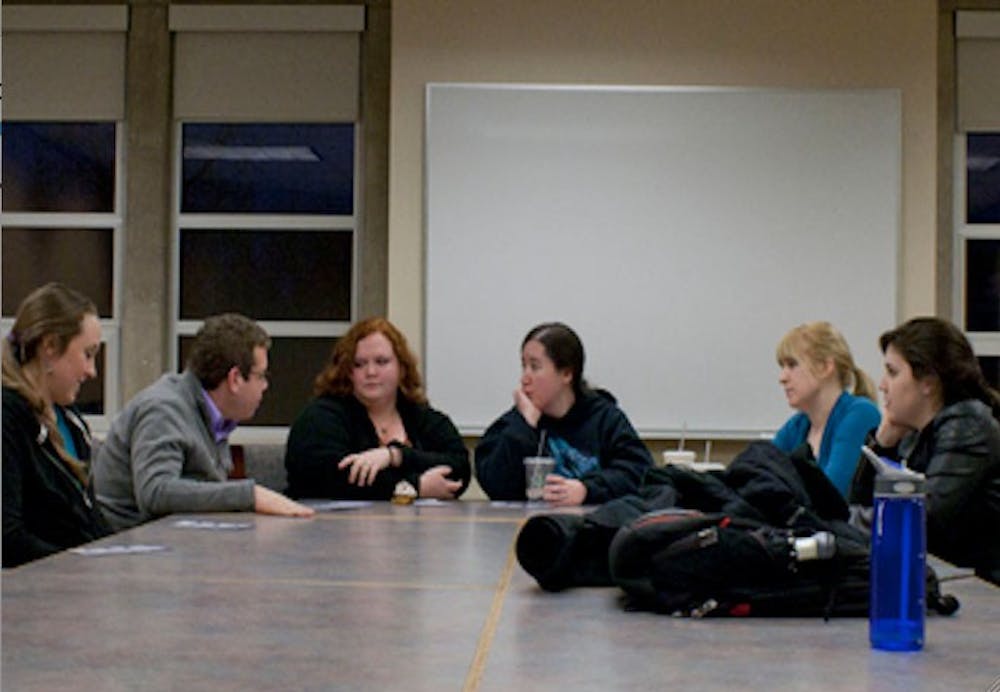Disability awareness has been an important issue to Ball State University since the 1960s. The predecessor to Larry Markle, the current Director of Disabled Student Development, noticed a lot of disabled students fending for themselves on campus. He began working with these students directly to fix the issue. Eventually, he set up the office of Disabled Student Development (DSD) so he could make sure that each student on campus had proper accessibility.
Ball State is now one of the forerunners in campus accessibility across the nation. For about 10 years, DSD has spread awareness for apparent and non-apparent disabilities during Disability Awareness Month in March. The Indiana Governor’s Council for People with Disabilities chose “Community Connections” as the theme for the 23rd Disability Awareness Month in Indiana to encourage neighbors to support one another.
Sydney Comer, the President of Disabled Student in Action (DSIA), thinks Ball State students and employees should still be working everyday to make sure that the disability community on campus is as acclimated and well integrated as they can be.
“It’s still very much a goal of this campus to integrate people with disabilities in every aspect of the student life,” Comer says.
After the Indiana Governor’s Council for People with Disabilities decides the theme, DSIA brainstorms campus events to highlight different types of disabilities.
DSIA students, the DSD office and a few other organizations collaborate to put on various events. Dr. Courtney Jarrett, Associate Director for Disabled Student Development, says that they present a movie every year because it leads to good discussions. The movie this year, which will take place on March 20 at 5 p.m., will discuss Dyslexia.
Jarrett says that Ball State has about 40 wheelchair students, who have a large presence on campus and in DSIA. That leaves out 70 or 80 percent of people that use DSD’s services who have non-apparent disabilities such as dyslexia. Jarrett thinks the panel this year will help with this misconception.
DSIA pairs with women in gender studies each year for an event during Women’s Week on the last week of March. The panel, which will take place on Monday, March 25 at 2 p.m. in the Student Center, focuses on women with disabilities.
Comer, who is in a wheelchair due to Spina Bifida, will represent women with apparent disabilities. DSIA member Brittany Feilen, who has a visual impairment, will be one of three representing women with non-apparent disabilities. The panel is a way for students to ask questions about certain disabilities in a non-judgmental environment.
“The whole part of coming to college and learning is so that students can learn from one other and share their experiences and grow to be better people, and I think that each event provides a lot of space for people to do that,” Jarrett says.
Feilen looks forward to how DSIA will advertise Disability Awareness Month. The group will have fake parking tickets complete with a convincing fake signature to put on cars illegally parked in handicap spaces. The small note will help spread awareness about the month.
Wheelchair tennis and basketball are other active events that will take place during the month. DSIA will also have volunteers at booths for students with further questions about disability awareness. The Governor’s Council provides materials free of charge for Hoosier communities, which will be passed out at DSIA tables in the Student Center.
Comer thinks Disability Awareness Month gives people with disabilities a platform so they don’t feel like they’re begging for attention or for help. Comer believes there is a communication barrier between people without disabilities and people with disabilities and that the awareness month is a good way to bridge that gap.
“I think more than anything it makes people realize, both with and without disabilities, that we’re the same,” Comer says.
Jarrett thinks the greatest learning lesson of the event is inclusion because the majority of disabilities at Ball State are non-apparent.
“You should automatically treat everyone equally because you don’t know if they’re going through some sort of struggle or need some sort of assistance, and that’s okay,” Jarrett says.
Jarrett hopes that this month’s events help people realize that a person’s disability does not define who they are and the goals they set for themselves.
Keep checking back at Ball Bearings Online for more stories and videos throughout Disability Awareness Month.





